COVID-19: TCTMD’s Dispatch for March Week 3
We’re curating a list of COVID-19 research and other useful content, and updating it regularly.
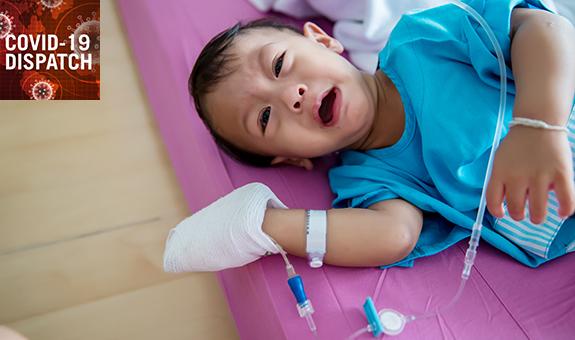
Since March 2020, TCTMD reporter Todd Neale has been writing up breaking news and peer-reviewed research related to COVID-19 every weekday. In July 2021, we transitioned to Mondays, Wednesdays, and Fridays. If you have something to share, tell us. All of our COVID-19 coverage can be found on our COVID-19 Hub.
March 18, 2022
US National Institute of Allergy and Infectious Diseases Director Anthony Fauci, MD, is predicting a “bit of an increase” in COVID-19 infections and hospitalizations, Bloomberg reported. “Or at least a flattening out and plateauing of the diminution of cases,” he said, pointing to rising cases in Europe and Asia. "We'd better be careful, because history has taught us that what's gone on in the UK generally happens to us 3 or 4 weeks later," Fauci said.
Italy, hit so hard by COVID-19 in early 2020, is preparing to roll back many of its vaccine and testing requirements, ending the state of emergency that’s been in place for 2 years as of March 31. That’s occurring even as new cases have increased by 50% in the last 2 weeks, the New York Times reports.
Hong Kong, meanwhile, announced a grim milestone, having surpassed 1 million cases in its population of 7.5 million in the ongoing Omicron surge. More than 5,000 people have died.
Moderna “has submitted a request to the US Food and Drug Administration (FDA) for an amendment to the emergency use authorization (EUA) to allow for a fourth dose of its COVID-19 vaccine (mRNA-1273) in adults 18 years of age and older who have received an initial booster of any of the authorized or approved COVID-19 vaccines,” the company announced yesterday. That’s a bigger ask than Pfizer, which earlier in the week submitted its own request, seeking an extension permitting second boosters in people 65 and older.
AstraZeneca may ditch plans to get their Oxford/AstraZeneca vaccine approved in the United States, citing “complex” hurdles. The drugmaker has yet to submit an application to the FDA. "We don't need to push it in places we are not needed or wanted,” AstraZeneca's head of research and development told the Financial Times. “If we don't end up submitting it for a [biologics license application], I don't think it will have an impact around the world."
 At the start of the pandemic, the observation that children seemed less likely to “catch” SARS-CoV-2—or at least develop symptomatic or severe COVID-19—provided some comfort to anxious parents and helped shape public policy. Now researchers writing in JAMA Network Open make the case that even after adjusting for contacts and vaccination status, “the Delta variant of SARS-CoV-2 was estimated to propagate more easily among children than pre-Delta strains.” Children ages 10 to 15 years were nearly twice as likely to be susceptible to Delta versus the earlier variants.
At the start of the pandemic, the observation that children seemed less likely to “catch” SARS-CoV-2—or at least develop symptomatic or severe COVID-19—provided some comfort to anxious parents and helped shape public policy. Now researchers writing in JAMA Network Open make the case that even after adjusting for contacts and vaccination status, “the Delta variant of SARS-CoV-2 was estimated to propagate more easily among children than pre-Delta strains.” Children ages 10 to 15 years were nearly twice as likely to be susceptible to Delta versus the earlier variants.
Results of the TOGETHER trial of ivermectin, hailed as the “largest trial of its kind,” were presented online today by Edward Mills, PhD, and Craig Rayner, PharmD, with a preview of the results provided to the Wall Street Journal. They show that people randomized to take the antiparasitic drug were just as likely as those given a placebo to require hospitalization, need a ventilator, or die, and no more likely to clear the virus faster or get out of the hospital sooner. “There was no indication that ivermectin was clinically useful," Mills is quoted in the article. Becker’s Hospital Review summarizes the findings, noting that they are “awaiting publication” in a peer-reviewed journal.
The risk of cerebral venous thrombosis (CVT) is much higher among patients infected with SARS-CoV-2 than among people who have received an mRNA-based COVID-19 vaccine, affirms a study out of Singapore. TCTMD’s Todd Neale has the details.
There’s more data to support the view that myocarditis risks are lower following a third dose of an mRNA vaccine than they are following a second, this time in a sample of Israeli military recruits. The incidence rates of myocarditis in the first and second week after a third vaccine dose were 3.17 and 5.55 per 100,000 vaccines given, respectively. Again, however, rates were highest for young men (ages 18 to 24), reaching 11.25 per 100,000 vaccines at the 2-week time point after vaccination. “All cases were mild, without arrhythmia or signs of congestive heart failure,” authors report in JAMA. “All remained without residual cardiac injury on hospital discharge.”
Compared with unvaccinated adults, those who received three doses of a COVID-19 vaccine were 94% less likely to be put on a ventilator or die as Omicron circulated, researchers report in Morbidity and Mortality Weekly Report. Over a study period that included the months when the Delta strain was dominant, overall vaccine effectiveness against death and need for mechanical ventilation from two doses was 92% in the first 2 weeks to 150 days, falling to 84% after 150 days. Three vaccine doses topped this up to 94%.
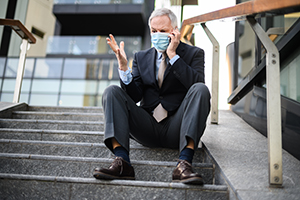 Public health officials are being harassed and threatened at levels never seen before, particularly in rural communities, according to a survey-based paper in the American Journal of Public Health. “The survey results were troubling,” Azma Hasina Mulundika reports for STAT. “Health officials said they were personally attacked, villainized, and their experiences often marginalized. Their work was, at best, underappreciated, and, at worst, blamed for broader problems.” Fully 6% said they’d received threats to their own safety or their family’s safety.
Public health officials are being harassed and threatened at levels never seen before, particularly in rural communities, according to a survey-based paper in the American Journal of Public Health. “The survey results were troubling,” Azma Hasina Mulundika reports for STAT. “Health officials said they were personally attacked, villainized, and their experiences often marginalized. Their work was, at best, underappreciated, and, at worst, blamed for broader problems.” Fully 6% said they’d received threats to their own safety or their family’s safety.
Four additional rapid tests were recalled this week by the FDA. Becker’s Hospital Review offers a list.
March 16, 2022
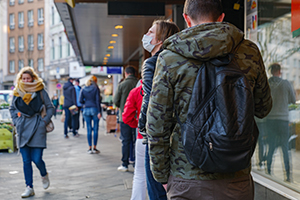 In the past 24 hours, Germany posted a record number of cases, 262,593 in a single day, accompanied by 269 deaths, the Guardian notes. The true numbers are likely higher, experts say, because testing facilities are over capacity and people testing positive on rapid tests are no longer required to take a PCR test to confirm the result.
In the past 24 hours, Germany posted a record number of cases, 262,593 in a single day, accompanied by 269 deaths, the Guardian notes. The true numbers are likely higher, experts say, because testing facilities are over capacity and people testing positive on rapid tests are no longer required to take a PCR test to confirm the result.
The United States “specializes in denialism” and is forging on with post-COVID plans despite signs that other Western countries are experiencing new COVID-19 surges, Eric Topol, MD, writes in the Guardian today. “In the past couple of weeks, the UK and several countries in Europe, including Germany, France, and Switzerland, are experiencing a new wave. At least 12 countries, geographically extending from Finland to Greece, are experiencing new increases in cases, some quite marked, such as Austria exceeding its pandemic peak, and Finland with an 85% increase from the prior week. Many of these countries are also showing a rise in hospital admissions.”
Schools are reopening across India after 2 years of closures, amid a drive to vaccinate more than 71 million children, including, for the first time, those ages 12 to 14. This age group will receive the Indian-made Corbevax, “a vaccine that has been approved for emergency use in children and that uses standard protein-vaccination technology that is widely available around the world, making it relatively cheap and easy to produce,” the New York Times reports.
In the US, the White House says it needs to wind down a program that offers vaccinations, testing, and treatment to those with no health insurance because it has run out of money, NPR reports. “Congress declined to add $22.5 billion in funding to a broad government spending bill passed last week. President Biden signed the bill into law on Tuesday, hailing it as a bipartisan achievement without mentioning the lack of COVID-19 funding,” after facing political pushback.
The Janssen vaccine from Johnson & Johnson, which fell out of favor earlier in the pandemic when it was deemed less effective than the two mRNA vaccines available in the US, while also being linked to an increased risk of cerebral venous sinus thrombosis in women, is making a comeback. “New data suggest that the vaccine is now preventing infections, hospitalizations, and deaths at least as well as the Pfizer/BioNTech and Moderna vaccines,” Apoorva Mandavilli reports in the New York Times, citing a medRxiv paper that has not yet been peer-reviewed. J&J put out a statement.
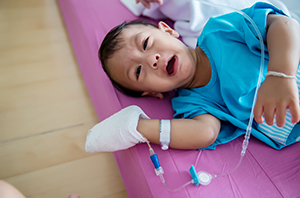 At the height of the Omicron surge in late December, US infants and children ages 0 to 4 were hospitalized at approximately five times the rate seen during the previous Delta-driven wave, investigators write in Morbidity and Mortality Weekly Report. Infants under 6 months of age had the highest hospitalization rates. “Important strategies to prevent COVID-19 among infants and young children include vaccination of currently eligible populations such as pregnant women, family members, and caregivers of infants and young children,” the authors conclude.
At the height of the Omicron surge in late December, US infants and children ages 0 to 4 were hospitalized at approximately five times the rate seen during the previous Delta-driven wave, investigators write in Morbidity and Mortality Weekly Report. Infants under 6 months of age had the highest hospitalization rates. “Important strategies to prevent COVID-19 among infants and young children include vaccination of currently eligible populations such as pregnant women, family members, and caregivers of infants and young children,” the authors conclude.
A countrywide comparison of the Oxford/AstraZeneca, Sputnik V, and Sinopharm vaccines conducted in adults over age 60 in Argentina indicates that the first two, both viral-vector vaccines, were more effective than the inactivated virus formulation, made by Sinopharm. But “even with only one dose of any of the three vaccines, the effectiveness of preventing death was more than 70%,” at least when the Lambda variant was dominant, authors write in the Lancet. An accompanying editorial notes that Delta never got much of a “foothold in the region,” but Omicron’s spread warrants tracking, as do the benefits of mixed doses. Moreover, write the editorialists, “the definition of fully vaccinated now is reasonably three doses.”
The angiotensin receptor blocker losartan does not reduce lung injury in patients with COVID-19, and may in fact cause harm, a study in JAMA Network Open warns. The blinded, placebo-controlled, randomized clinical trial conducted in 13 US hospitals between April 2020 and February 2021 did not have the hoped-for effects in reducing lung injury, hospitalization times, or death. Notably, a numerically higher rate of cardiovascular serious adverse events were noted in the losartan group (14 versus six).
Pfizer/BioNTech have submitted an application to the FDA seeking authorization for a second booster dose in adults over age 65. “Data showed rates of confirmed infections were two times lower and rates of severe illness were four times lower among individuals who received an additional booster dose of Pfizer/BioNTech COVID-19 vaccine compared to individuals who received only an initial booster,” a press release states.
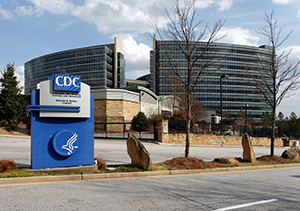 The highly transmissible Omicron subvariant BA.2 is responsible for about 23% of new US cases, according to new data released by the US Centers for Disease Control and Prevention (CDC). That’s double the estimate initially released a week ago. Moreover, the variant appears more capable of reinfecting people who recently recovered from the original Omicron variant, although this happened more often in unvaccinated individuals.
The highly transmissible Omicron subvariant BA.2 is responsible for about 23% of new US cases, according to new data released by the US Centers for Disease Control and Prevention (CDC). That’s double the estimate initially released a week ago. Moreover, the variant appears more capable of reinfecting people who recently recovered from the original Omicron variant, although this happened more often in unvaccinated individuals.
March 14, 2022
It’s been 2 years since the World Health Organization (WHO) declared the COVID-19 situation a pandemic on March 11, 2020, and various news stories reflect on the current state of the world, which is eyeing a return to normalcy even as there are signs that the virus isn’t done with us.
“Rates of new infections, while improving, are still higher now than the beginning of last summer,” the New York Times notes.
In Vanity Fair, Eric Lutz writes that “the onset of the crisis felt sudden and epochal; its current recession has been gradual, plagued by variant-driven setbacks and political dysfunction and a nagging sense that, however hopeful things may seem now, there’s always another shoe waiting to drop.”
The Associated Press recounts the story of the past 2 years in the United States.
 On Monday, Chinese authorities locked down Shanghai Tower, the world’s second-tallest building (behind Dubai’s Burj Khalifa), in a bid to contain a fast-spreading COVID-19 outbreak, Bloomberg reports. People inside will not be allowed to leave until they’re tested for SARS-CoV-2 and no positive cases are found. “China typically locks down buildings if there are confirmed COVID patients inside, or even close contacts of known cases, to mass test and screen out infections,” the story explains. “It’s part of the country’s zero-tolerance approach to the virus that is being challenged by the highly contagious Omicron variant and the scale of a new outbreak.”
On Monday, Chinese authorities locked down Shanghai Tower, the world’s second-tallest building (behind Dubai’s Burj Khalifa), in a bid to contain a fast-spreading COVID-19 outbreak, Bloomberg reports. People inside will not be allowed to leave until they’re tested for SARS-CoV-2 and no positive cases are found. “China typically locks down buildings if there are confirmed COVID patients inside, or even close contacts of known cases, to mass test and screen out infections,” the story explains. “It’s part of the country’s zero-tolerance approach to the virus that is being challenged by the highly contagious Omicron variant and the scale of a new outbreak.”
The Associated Press has more on China’s multiple, Omicron-driven outbreaks.
Former US President Barack Obama revealed over the weekend that he tested positive for SARS-CoV-2, while his wife, Michelle, tested negative, the Associated Press reports. “I’ve had a scratchy throat for a couple days, but am feeling fine otherwise,” he said on Twitter. “Michelle and I are grateful to be vaccinated and boosted.”
Pfizer CEO Albert Bourla said Sunday that a fourth dose of its COVID-19 vaccine developed with BioNTech will be needed to maintain adequate protection (The Hill). On CBS’s Face the Nation, he said: “The protection that you are getting from the third, it is good enough, actually quite good for hospitalizations and deaths. It's not that good against infections but doesn't last very long. But we are just submitting those data to the [Food and Drug Administration], and then we will see what the experts also will say outside Pfizer.”
Early treatment of mild-to-moderate COVID-19 with the injectable neutralizing antibody sotrovimab appears to significantly reduce the risk all-cause hospitalization lasting longer than 24 hours or death through day 29 (1% vs 6%, respectively), results of a 1,057-patient randomized trial show. The trial, which included mostly middle-aged and older subjects who had one other comorbidity expected to increase their risk of disease progression, was stopped early for efficacy, authors report in JAMA. “In contrast to other monoclonal antibodies, sotrovimab targets a highly conserved epitope in the SARS-CoV-2 spike protein at a region that does not compete with binding of the angiotensin-converting enzyme 2,” they note.
The medicines safety committee of the European Medicines Agency (EMA) has recommended adding small-vessel vasculitis with cutaneous manifestations as a “possible side effect of unknown frequency” to the product information for the Janssen COVID-19 vaccine (Johnson & Johnson). The committee has reviewed 21 reported cases, including 10 consistent with the established definition of single-organ cutaneous vasculitis. Of those 10, eight occurred shortly after the patient received the vaccine. The committee also recommended highlighting risk of flare-ups of capillary leak syndrome in the product information for Spikevax (Moderna).
A research letter published last week in Emerging Infectious Diseases shows that the average time between exposure to COVID-19 diagnosis was 3.7 days among quarantined close contacts of patients infected with the Omicron variant. Half of cases among the contacts were diagnosed by day 3, 70% by day 5, and 99.1% by day 10. “A 10-day quarantine period may encompass most persons exposed to Omicron; however, quarantine duration may become shorter after balancing societal cost with public health benefit,” the researchers say. CIDRAP News has more details.
 Antibodies in breast milk are an important tool for helping vulnerable newborns and infants. Now an analysis in JAMA Pediatrics reports that SARS-CoV-2-specific IgA in human milk was “present more frequently after vaccination with an mRNA-based vaccine compared with a vector-based vaccine.” IgG, on the other hand, was found in breastmilk samples from mothers regardless of what type of full vaccination they’d received (either mRNA or vector-based), but tended to be detectable earlier after vaccination with either of the mRNA vaccines. “Based on these data, we suggest that an mRNA-based vaccine is the optimal choice for lactating women when they want to transfer antibodies to their infants,” researchers say.
Antibodies in breast milk are an important tool for helping vulnerable newborns and infants. Now an analysis in JAMA Pediatrics reports that SARS-CoV-2-specific IgA in human milk was “present more frequently after vaccination with an mRNA-based vaccine compared with a vector-based vaccine.” IgG, on the other hand, was found in breastmilk samples from mothers regardless of what type of full vaccination they’d received (either mRNA or vector-based), but tended to be detectable earlier after vaccination with either of the mRNA vaccines. “Based on these data, we suggest that an mRNA-based vaccine is the optimal choice for lactating women when they want to transfer antibodies to their infants,” researchers say.
LuSys Laboratories has recalled its COVID-19 antigen tests (nasal/saliva) and COVID-19 IgG/IgM antibody tests because they don’t have any type of clearance from the US Food and Drug Administration (FDA), the agency announced: “The risks include potential false-negative, false-positive, and misinterpretation of results from these tests.”
Todd Neale is the Associate News Editor for TCTMD and a Senior Medical Journalist. He got his start in journalism at …
Read Full Bio


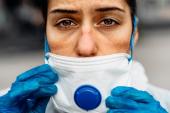

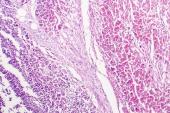
Comments